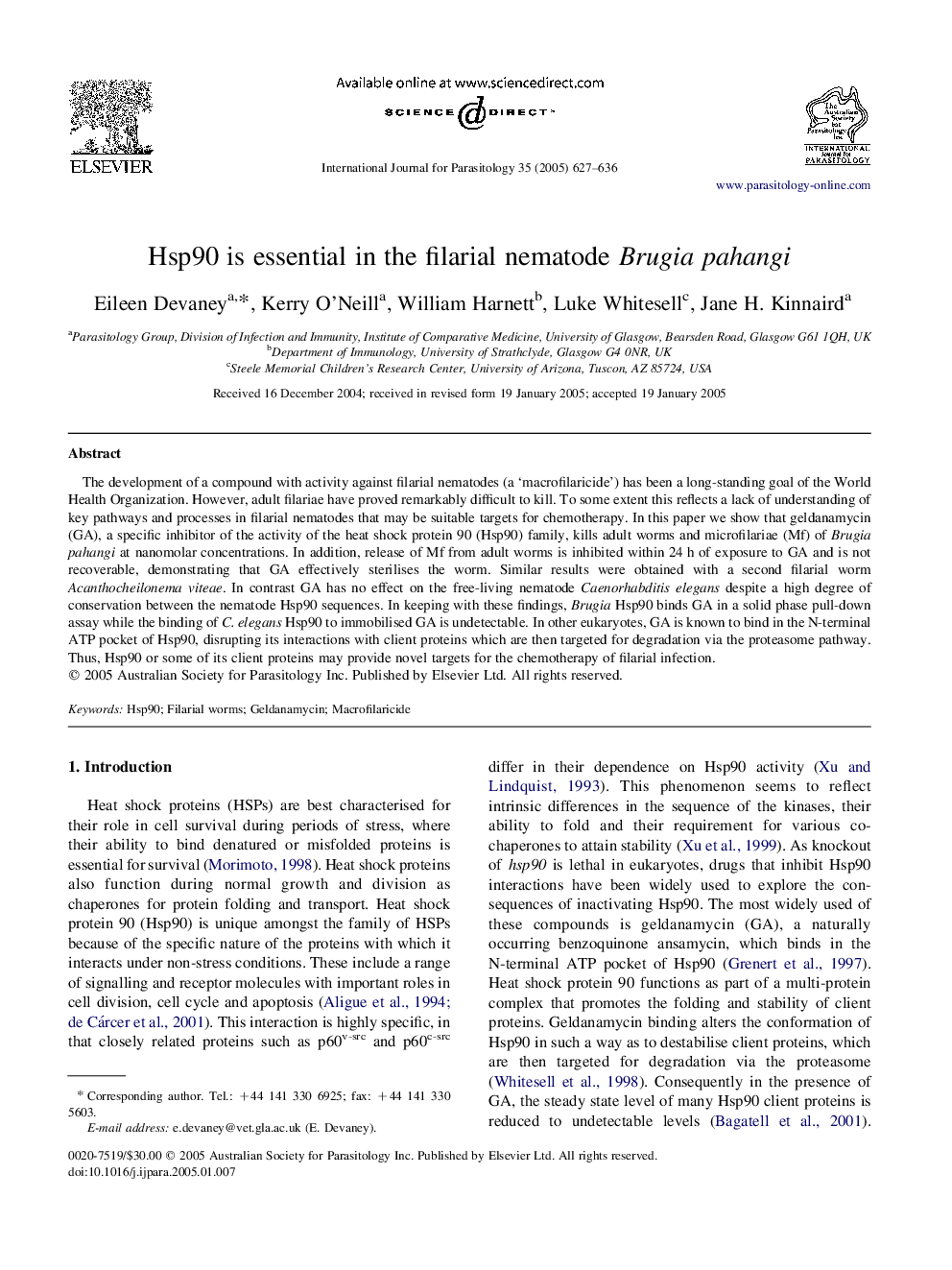| Article ID | Journal | Published Year | Pages | File Type |
|---|---|---|---|---|
| 8979879 | International Journal for Parasitology | 2005 | 10 Pages |
Abstract
The development of a compound with activity against filarial nematodes (a 'macrofilaricide') has been a long-standing goal of the World Health Organization. However, adult filariae have proved remarkably difficult to kill. To some extent this reflects a lack of understanding of key pathways and processes in filarial nematodes that may be suitable targets for chemotherapy. In this paper we show that geldanamycin (GA), a specific inhibitor of the activity of the heat shock protein 90 (Hsp90) family, kills adult worms and microfilariae (Mf) of Brugia pahangi at nanomolar concentrations. In addition, release of Mf from adult worms is inhibited within 24Â h of exposure to GA and is not recoverable, demonstrating that GA effectively sterilises the worm. Similar results were obtained with a second filarial worm Acanthocheilonema viteae. In contrast GA has no effect on the free-living nematode Caenorhabditis elegans despite a high degree of conservation between the nematode Hsp90 sequences. In keeping with these findings, Brugia Hsp90 binds GA in a solid phase pull-down assay while the binding of C. elegans Hsp90 to immobilised GA is undetectable. In other eukaryotes, GA is known to bind in the N-terminal ATP pocket of Hsp90, disrupting its interactions with client proteins which are then targeted for degradation via the proteasome pathway. Thus, Hsp90 or some of its client proteins may provide novel targets for the chemotherapy of filarial infection.
Related Topics
Life Sciences
Immunology and Microbiology
Parasitology
Authors
Eileen Devaney, Kerry O'Neill, William Harnett, Luke Whitesell, Jane H. Kinnaird,
